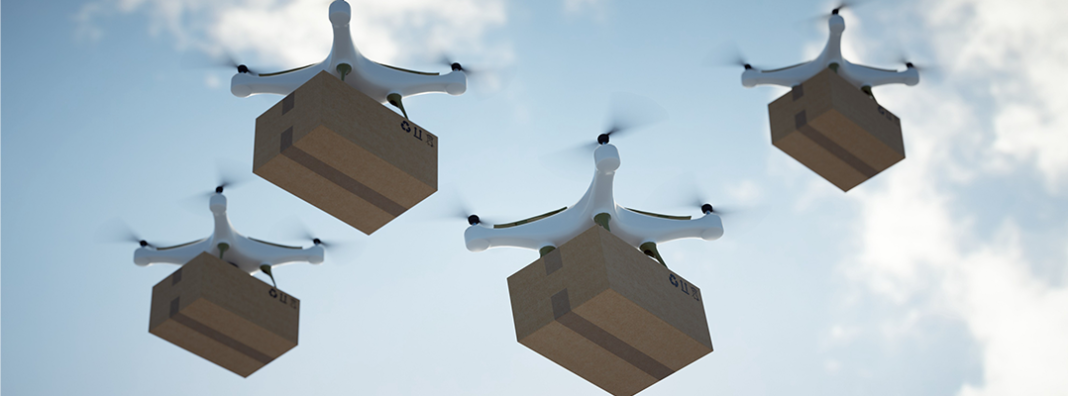
Drones make a great gift for tech-loving kids and adults. Of course, it’s all fun and games until commercial airline pilots start reporting near misses with bird-sized drones. As you might expect, when something like that makes headlines, regulators typically aren’t far behind.
The Federal Aviation Administration (FAA), currently the regulatory body in charge of the skies, has made efforts to prevent clear safety concerns. Its most recent endeavors include pilot certification tests and drone registration requirements. But the truth is, there is no fool-proof way to keep these things from happening. The only deterrent available is law enforcement, which only investigates rogue drones after-the-fact. Even then, perpetrator pilots are not always caught.
Those of us who like to overcomplicate things have proposed a variety of complicated policy proposals. The most prominent focus on city vs. state vs. federal drone regulation, altitude limitations, national security implications, and government surveillance concerns. Some proposals even have creative adaptations of property law sprinkled in.
Each of these proposals, for all their good intentions, miss an important point. The focus should be on getting commercial drones out of the weeds and into the sky. Doing that depends on the distinction between consumer drones and commercial drones. We can argue the nuance of regulating consumer drones all we want. But if we want 30-minute drone delivery, leave commercial drones out of it.
Commercial Drones are Not Like Consumer Drones
The most entertaining way to illustrate the distinction between a consumer drone and a commercial drone is by using the colorful facts of a case called Boggs v. Meredith, involving two Kentucky neighbors, a drone, and a shotgun.
When John Boggs flew his drone over William Merideth’s backyard, Merideth called the police. The police told Meredith there was nothing they could do about it and left. Not long after, Boggs flew his drone over Merideth’s backyard again, and Merideth promptly blew it out of the sky with a shotgun.
Aside from being arrested for firing a shotgun in a residential area, Merideth faced legal troubles when Boggs sued for the loss of his drone. The case was thrown out by a sympathetic Kentucky judge, but some like Brent Skorup have used this case to argue for state legislation with sweeping implications for drone operations based on property rights in airspace.
But the neighborly spats are a distraction. Of course there are instances where consumer drone owners take things too far. One good look at LA’s Rocket Man is proof enough. But that misses the point. There is a clear difference between a consumer drone and a commercial drone.
Commercial drones are not used to pester neighbors. They are used to perform aerial tasks that improve quality of life. For instance, commercial drones deliver medical supplies to hard-to-reach rural locations, offer same-day delivery for consumer goods and groceries, sanitize sports stadiums with attached misters, and replant millions of trees lost to wildfires, deforestation, and climate change. The list of commercial drone applications is hardly exhaustive.
The Regulatory Environment and All its Trappings
Meanwhile, authorization for drone-based enterprises by the FAA are hard to come by. The reason is two-fold. First, the FAA has a reputation for risk aversion. Second, policy discussions about drones are overly broad. They cover a range of concerns which apply primarily to consumer drones. To add, a host of state laws regulating drones have popped up with little regard to uniformity.
As a result, commercial drone operations seeking authorization have been, up until recently, rejected or delayed. These delays hold back a wealth of commercial drone possibilities. But regulatory fear is not altogether baseless.
To a degree, those fears stem from the obvious concern about mid-air collisions between airplanes and drones. The chances of a drone colliding with a commercial airliner are low, as Eli Dourado and Samuel Hammond pointed out, but the outcome of an impact can be alarmingly destructive.
Fears also spring up when looking at drones that can fly beyond a pilot’s visual line of sight (BVLOS). Avoiding mid-air collisions has its difficulties when a pilot cannot see the drone. Yet, BVLOS operations are crucial to the delivery drone operations planned by Amazon, UPS, and Alphabet.
Clearing the Way for Takeoff
So how does the FAA allay safety fears without stifling innovation? Easy: Outline clear industry standards. The best part is the FAA doesn’t have to change a thing.
Defining what class of drones the FAA seeks to regulate simplifies things even further. Consumer drones may create concerns about property rights, nuisance, national security, and surveillance. But we should untangle commercial drones from these policy discussions.
Broadly speaking, there are only three standards that need to be made clear.
First, standardized altitude limitations are needed to keep commercial drones well-under the danger zone of passing aircraft. Second, clear restricted airspace rules are useful to warn commercial drones about areas to stay away from like airports where low-altitude collisions are more likely. Finally, we should double down on commercial drone integration efforts that include delivery fleet certifications to hold companies accountable if a commercial drone runs afoul of the FAA.
Going beyond these common-sense standards for commercial drones is an unnecessary complication. It’s time to clear commercial drones for takeoff.

